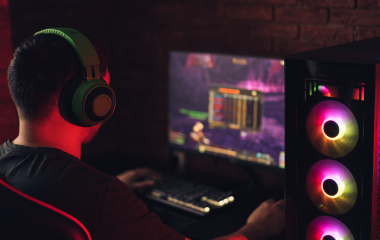

In the vast universe of video gaming, where software titles often steal the limelight, there exists a parallel realm equally important to enthusiasts: the world of gaming hardware. For many, building the perfect gaming PC is not just a necessity but a passion, an art form that melds technology and personal expression.
Creating the ultimate gaming PC is more than just a question of performance—it’s about crafting an experience. Every component, from the motherboard to the GPU, contributes to this. Yet, despite its complexities, anyone can dive into PC building with the right knowledge and a touch of patience.
The heart of any gaming machine is its central processing unit (CPU). A powerful CPU ensures seamless multitasking, swift load times, and optimized gameplay. Brands like AMD and Intel are continually pushing boundaries, offering chips that cater to both casual gamers and hardcore enthusiasts.
But while the CPU is vital, it’s the graphics processing unit (GPU) that often takes center stage for gamers. A robust GPU translates to higher resolutions, smoother frame rates, and the ability to crank up those in-game settings to ‘ultra’. As 4K gaming and ray-tracing technology become more commonplace, investing in a top-tier GPU has never been more crucial.
Memory is another key player. Rapid access RAM allows games to retrieve data swiftly, ensuring stutter-free gameplay. Typically, 16GB is the sweet spot for modern titles, but as games become more demanding, increasing this number can offer noticeable improvements.
Storage solutions have also seen significant innovations. Gone are the days when bulky hard drives were the only options. Solid-state drives (SSDs) have revolutionized load times, and with the advent of NVMe technology, their speeds have gone through the roof. A combination of SSD for core files and games, paired with a larger HDD for general storage, is often the recommended setup.
Cooling is the unsung hero of any gaming PC. Effective cooling solutions, be it air or liquid, ensure longevity and peak performance. They also open doors for overclocking, pushing components beyond their base limits.
Of course, a gaming PC isn’t just about the internals. The aesthetic plays a role too. Cases offer a canvas for expression, with options ranging from minimalist designs to RGB-laden showpieces. And then there are peripherals—the mouse, keyboard, monitor—all crucial in their own right, each adding a layer to the gaming experience.
Yet, with all its components and choices, the true beauty of building a PC lies in its personal nature. Each machine reflects its creator’s preferences, needs, and style. It’s a journey of discovery, understanding, and ultimately, satisfaction.
In sum, the world of gaming PCs is intricate and evolving, but it’s this very complexity that makes it so enticing. And as technology continues to advance, the horizon for what’s possible in this realm will only expand, ensuring that the art of PC building remains a cherished aspect of gaming culture.
Share this post



Your Portal to Gaming Adventure.
Where gaming is not just a hobby but a way of life